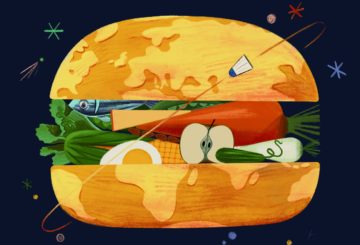Gayathri Vaidyanathan in Nature:
 A clutch of fishing villages dot the coast near Kilifi, north of Mombasa in Kenya. The waters are home to parrot fish, octopus and other edible species. But despite living on the shores, the children in the villages rarely eat seafood. Their staple meal is ugali, maize (corn) flour mixed with water, and most of their nutrition comes from plants. Almost half the kids here have stunted growth — twice the national rate. In 2020, Lora Iannotti, a public-health researcher at Washington University in St. Louis, and her Kenyan colleagues asked people in the villages why the children weren’t eating seafood, even though all the parents fish for a living; studies show that fish and other animal-source foods can improve growth1. The parents said it made more financial sense for them to sell their catch than to eat it.
A clutch of fishing villages dot the coast near Kilifi, north of Mombasa in Kenya. The waters are home to parrot fish, octopus and other edible species. But despite living on the shores, the children in the villages rarely eat seafood. Their staple meal is ugali, maize (corn) flour mixed with water, and most of their nutrition comes from plants. Almost half the kids here have stunted growth — twice the national rate. In 2020, Lora Iannotti, a public-health researcher at Washington University in St. Louis, and her Kenyan colleagues asked people in the villages why the children weren’t eating seafood, even though all the parents fish for a living; studies show that fish and other animal-source foods can improve growth1. The parents said it made more financial sense for them to sell their catch than to eat it.
So, Iannotti and her team are running a controlled experiment. They have given fishers modified traps that have small openings that allow young fish to escape. This should improve spawning and the health of the overfished ocean and reef areas over time, and eventually increase incomes, Iannotti says. Then, for half the families, community health workers are using home visits, cooking demonstrations and messaging to encourage parents to feed their children more fish, especially plentiful and fast-growing local species such as ‘tafi’, or white spotted rabbitfish (Siganus canaliculatus) and octopus. The scientists will track whether children from these families eat better and are growing taller than ones who don’t receive the messaging.
The aim of the experiment, says Iannotti, is to understand “which sea foods can we choose that are healthy for the ecosystem as well as healthy in the diet”. The proposed diet should also be culturally acceptable and affordable, she says.
More here.
